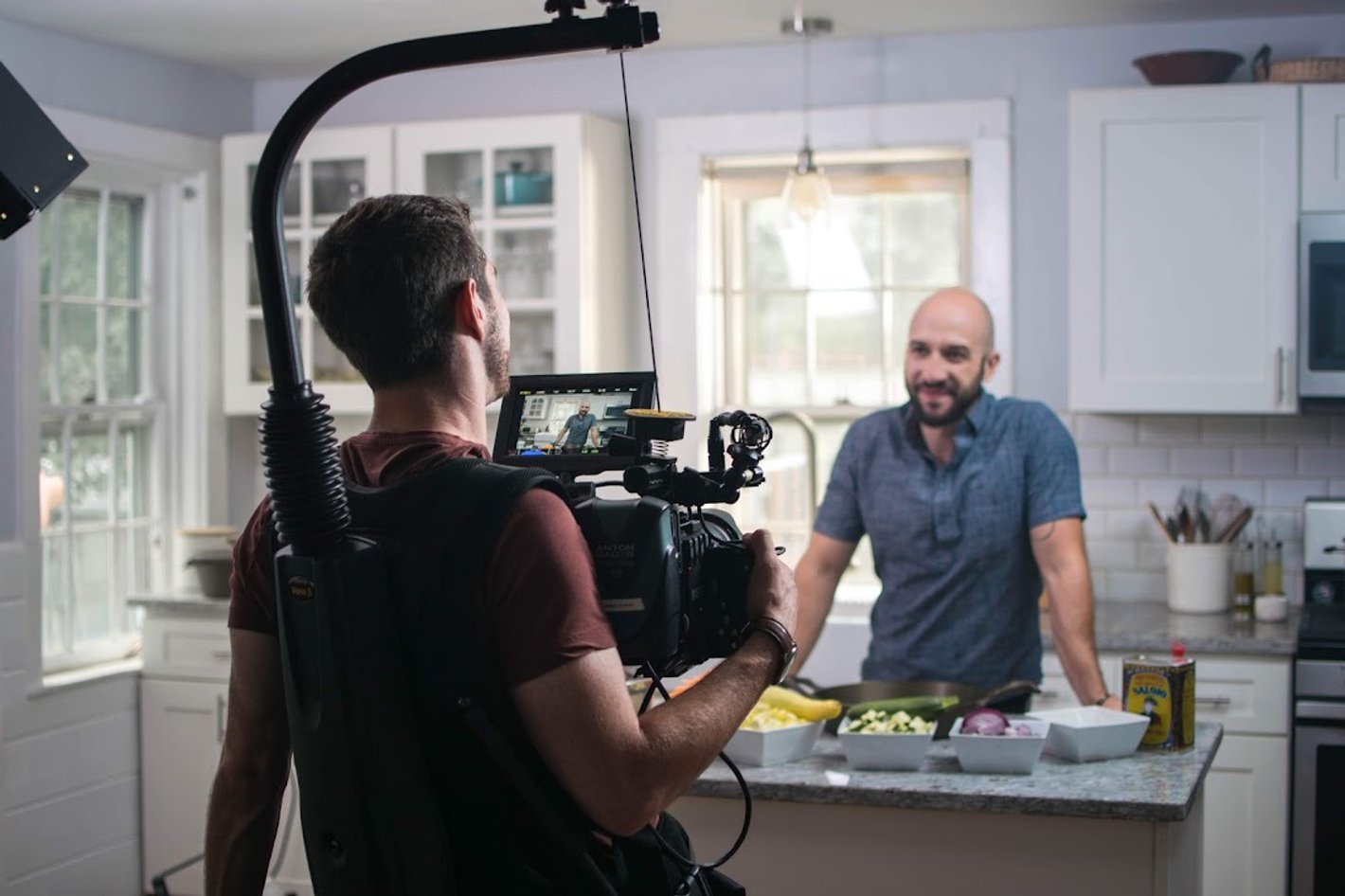What Is Video Content Marketing?
Justin Andrews
What Is Video Content Marketing?
Content, as they say when they are feeling extremely uncreative, is king. Cliché though this statement might be, it is very true. Moreover, with the switch to focus on video happening across online platforms, from blogs to social media and beyond, it has never been more important to focus on video content marketing.
This is easy to say, of course, but not nearly as easy to do. While the appeal of video content marketing is fairly obvious – put out engaging videos, get devoted followers, clients and customers – the mechanisms behind its creation and distribution is far less obvious.
Accordingly, let’s take a comprehensive look at exactly what video content marketing is, why it’s critical to success, and how you can add it seamlessly to your sales funnel. By the end of this guide, you should understand the merits of this media type, how and when to use it, and the best approaches to it for your business. Onward!

Content Marketing Then and Now
Content marketing, as defined by the Content Marketing Institute , is “a strategic marketing approach focused on creating and distributing valuable, relevant, and consistent content to attract and retain a clearly defined audience.” Most importantly, the goal is to use various types of content to “drive profitable customer action” – e.g. signups, purchases, memberships and more.
It wasn’t always this way. Back in the days of neon-green web pages and pictures that loaded one line at a time, content marketing entered its infancy. The idea was similar to today: boldly share your sales message and convince customers to ‘buy all the things’. Unfortunately, it quickly became clear that many companies were having trouble distinguishing between “bold” and “pushy.”
Smart companies saw the problem, and they pivoted. Instead of pushy sales messages, they instead strove to create conversation between business and customer. Instead of one-way pitches, they cultivated conversations. And instead of making a sale, they focused on ensuring their audience knew about, liked and trusted their brands.
Today, this is the gold standard. It is this kind of content that is king. Because after all, humans crave connection – and the most successful brands are those that foster that instinctive link through content. It’s a simple equation: if you want more of those connections, the answer is more good content.
More specifically, in today’s digital climate, the answer is video content marketing.
What Exactly Is Video Content Marketing?
As content marketing is a strategy where you use media to pull in customers, video content marketing uses short films and advertising to do so. Types of video range widely, from vlogs to how-tos, interviews or Q&As, live streams and webinars, in-depth YouTube videos and social media shorts, among others.
Customers gain greater enjoyment from these types of content than from bite-sized social media memos or in-depth content, even if that is still extremely useful for search engine optimization (SEO). Plus, while you might convey exactly the same information in a film as you would in written content, the medium itself makes that message much more impactful owing to the power of video.
Consider the following video statistics:
From 2017 to 2022, the amount of video content online increased by a factor of 15, now making up more than 80 percent of traffic
85 percent of Americans who use the internet watch video monthly, while 55 percent view them every day
Of consumers loyal to a brand or business, 54 percent of them would like to see more video content from them
A full 95 percent of video viewers retain its message when they watch, whereas the same content in written form garners only a 10 percent recall from readers
This last fact is especially powerful. If you can hook viewers with an interesting video, then keep them on the page long enough to ingest your message, you’re more likely to transform a casual observer to an audience member and eventually a customer.
Clearly, if you’re not communicating with customers on a video marketing level, you’re missing out. Yet as helpful as video is to your cause, it’s not helpful simply to create short films and toss them into the screaming void of the internet. That way lies madness.
Instead, you need an intelligent, intentional approach that integrates video into your existing sales funnel.

What Role Does Video Content Marketing Play in Your Sales Funnel?
True, the concept of a “sales funnel” is almost as tired as that of “content is king,” but much like the latter, the former is more relevant than ever in today’s world. While the idea may not be new, it should still govern every move you make in the online sphere, brick-and-mortar spaces, advertising media and more.
If you look online, you will find as many images of the sales funnel as there are people to create them. The main idea, however, is the same. At the top of the funnel are a whole lot of potential customers, while at the bottom are the considerably smaller portion of them willing to purchase something and commit to your brand.
This representation uses six stages, with the buyer’s journey on the left and the business’s sales strategy on the right. If you haven’t yet familiarized yourself with the sales funnel, it is well worth your time to do so. When you match up the right promos, films and shorts to the right stage of the funnel, you are more likely to get and keep someone’s attention. That in turn means your ROI will increase and your business will grow.
Here's a basic approach to the types of content you should use in each stage:
Awareness: Ads and explainers that articulate a specific problem and how you solve them. Documentaries or films about your brand and the problems it solves.
Discovery: Humorous, entertaining or inspirational videos that don’t necessarily sell anything, but make people want to sit with your content and enjoy it.
Evaluation: Video content that creates emotion in the potential customer or answers a serious question for them.
Intent: Videos that push them toward a purchase, that show them how it works in real life, that introduce them to the brand, that enter through gated channels such as email. This can also include lower stakes webinar content and demonstrations.
Purchase: The final phase of video content marketing, where the client or customer needs videos that show them exactly how your product works and answers their final questions. This can also be personalized DIY videos from your team.
Loyalty: Ongoing educational, thought leadership, humorous or bonding videos that encourage add-ons, upselling, cross-selling and continued awareness of your brand
Now that you understand why video is worthwhile and what types you might want to make, the question becomes, what do you need to do it well?

A Quality Video Content Marketing Strategy: The Basic Ingredients
Video content marketing is like any other recipe. If you desire a great end result, you need the right ingredients. There are two reasons you don’t want to skimp. First, compelling content will keep potential clients and customers on the page longer. Second, and perhaps more importantly, crummy content can actively damage your brand, making you look cheap, sloppy, stupid or simply not worth someone’s time.
If you’re going to make a video, you simply can’t cut corners. You’ll need:
A well fleshed-out audience profile and market research, so you know who you’re trying to attract.
Specific goals for what you want your video to achieve, with metrics.
A healthy budget for each film. If you cannot throw a lot of money at video, use the money you have for one fully realized piece of content rather than many half-baked ones.
The right talent. Most companies don’t have well-versed videographers in house, so it’s worth outsourcing to professionals.
Creative, original ideas. Again, if that’s not your company’s strong suit, hire help.
Let’s take a closer look at how each of these components plays out in an effective video content marketing strategy.
Any good video marketing approach should follow three basic steps: creating your strategy, making the videos, getting them out into the world. If you do it right, you will build a process that you can replicate again and again, year after year.

Step 1: Build an Awesome Strategy
Your success lives or dies on your strategy. Before you shoot a single scene, you need to gather the above ingredients and decide how best to use them. You must:
Do thorough market research to find out who your audience is, what they like to watch, and which forms of short and long content will keep them on the page longest.
Check out your competition as well to see what they’re making and what performs best.
If relevant, divide your customers up into different personas so you can bring the right type of content to each.
Decide where you will distribute your videos once made, including possible channels such as social media, your own blog, industry-leading websites and paid advertising.
Step 2: Ramp Up Video Content Marketing Production
Next, work within your company or with a production team to come up with ideas, write scripts, gather props and supplies, “cast” members of your business or outside actors, and create the content. An outside production team will help your team producer high-level content, improve overall efficiency in the process, bring outside ideas, and keep your team out of the weeds (which can be costly).
Set aside time dedicated to making videos, where everyone can give it their undivided attention. If you have the budget, film and edit multiple videos at once. Economies of scale are always beneficial if you have the resources. This helps you build a “video” library of content that can be leveraged more quickly across ongoing campaigns.

Step 3: Put the “M” in Marketing
The last step of video content marketing is to get it out there. Avoid the temptation to just smear videos all over the internet, and instead use them judiciously at the right stages of your marketing funnel: on social media, on your website, in your newsletter, at trade shows and conventions, and even in actual conversation. This will help you move customers from Awareness to Loyalty with ease.
While search engines change their rules all the time, the basics are consistent. A searcher types in terms, then the algorithm tries to match their intent to the available content, ranking the results by relevance. Gearing your content to try and reach the right customers is called search engine optimization, or more commonly, SEO – and it’s just as important with video as it is with a written piece.
You can make the coolest video in the world, but if you don’t signal search engines that it’s there, they won’t know. So be sure to include a compelling title, metadata, author bios and everything else you would include with a blog post. That way, search engines don’t have to do any guessing.
The process works in reverse as well. When you put video on a page, search engines automatically rank it higher for that reason alone. So if you have a piece of well-performing content and want it to get on the first page of a search result, for instance, adding a video at the top is the best thing you can do.

How to Use Your Video Content on Social Media
Video content and social media may just be a match made in heaven. While 54 percent of marketers believe that video offers the best social media bang for your buck, according to Sprout Social, it’s shockingly underrepresented: “video is also the most underutilized format across Facebook, Instagram and Twitter, comprising 14%, 11% and 5% of each network’s content respectively.”
Considering a full 93 percent of companies have snagged a new customer by using video on social media, this is really pretty surprising … and leaves room for you to shine.
Don’t forget that YouTube is also a social media platform, with most of the same sharing, commenting and live features of other socials. Plus, it’s the second-largest search engine in the entire world, after Google (its parent company). No matter where else you’re using video, be sure to pop those videos on YouTube as well!
Get in Touch with Animus Studios to Learn More
Overall, video can take you in endless directions. Want to learn more about video content marketing from industry-leading professionals? The production team at Animus Studios is standing by to help, so get in touch if you’re ready to put the power of video to work for your brand.

